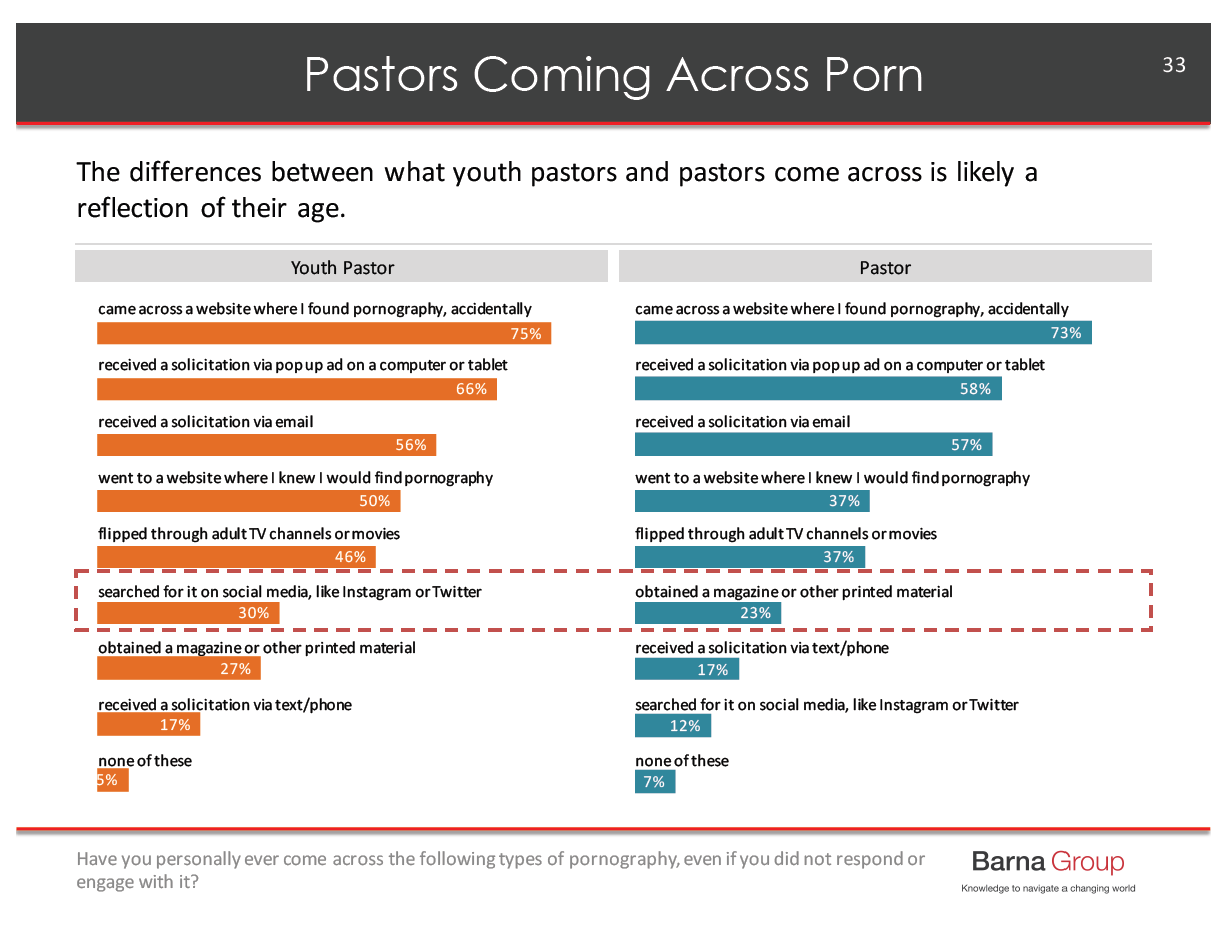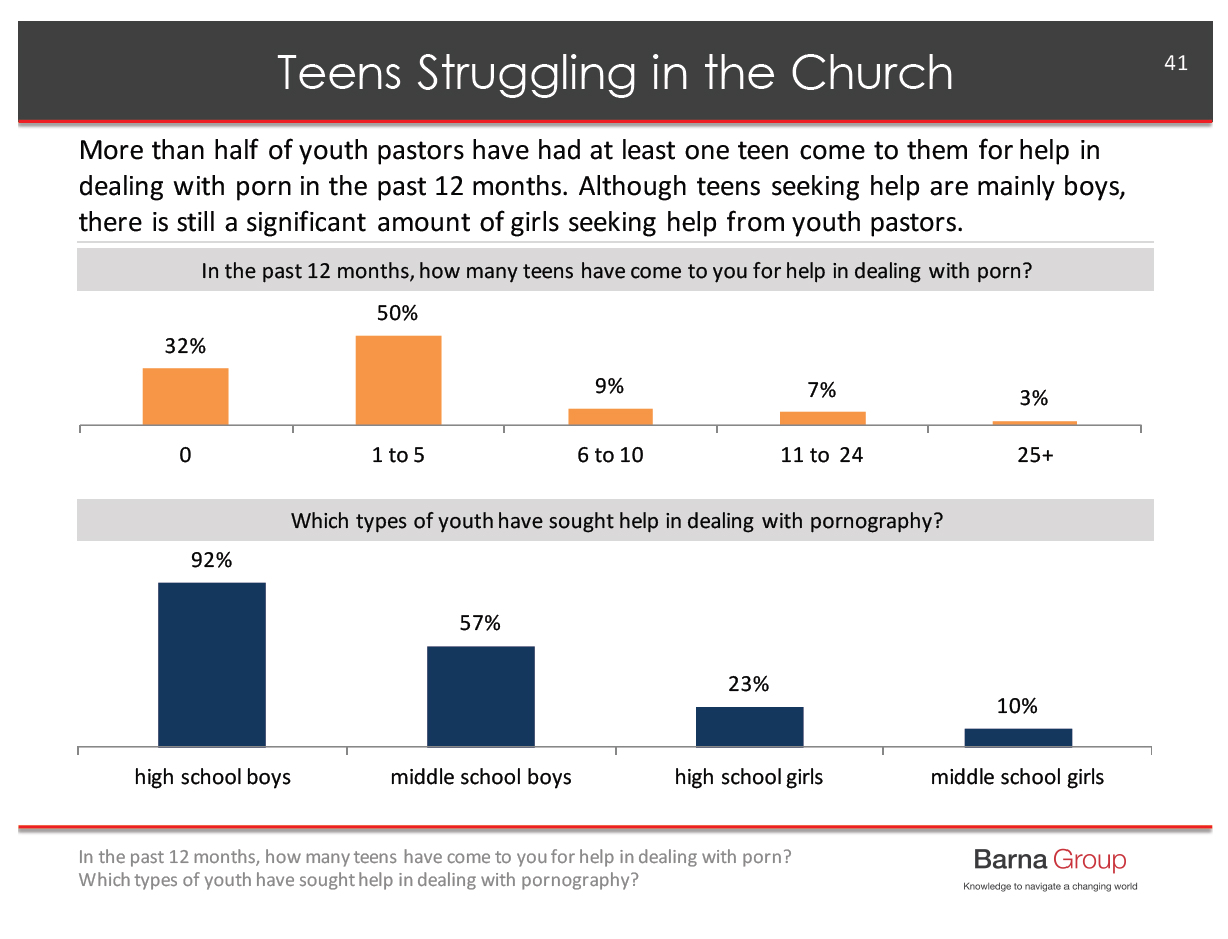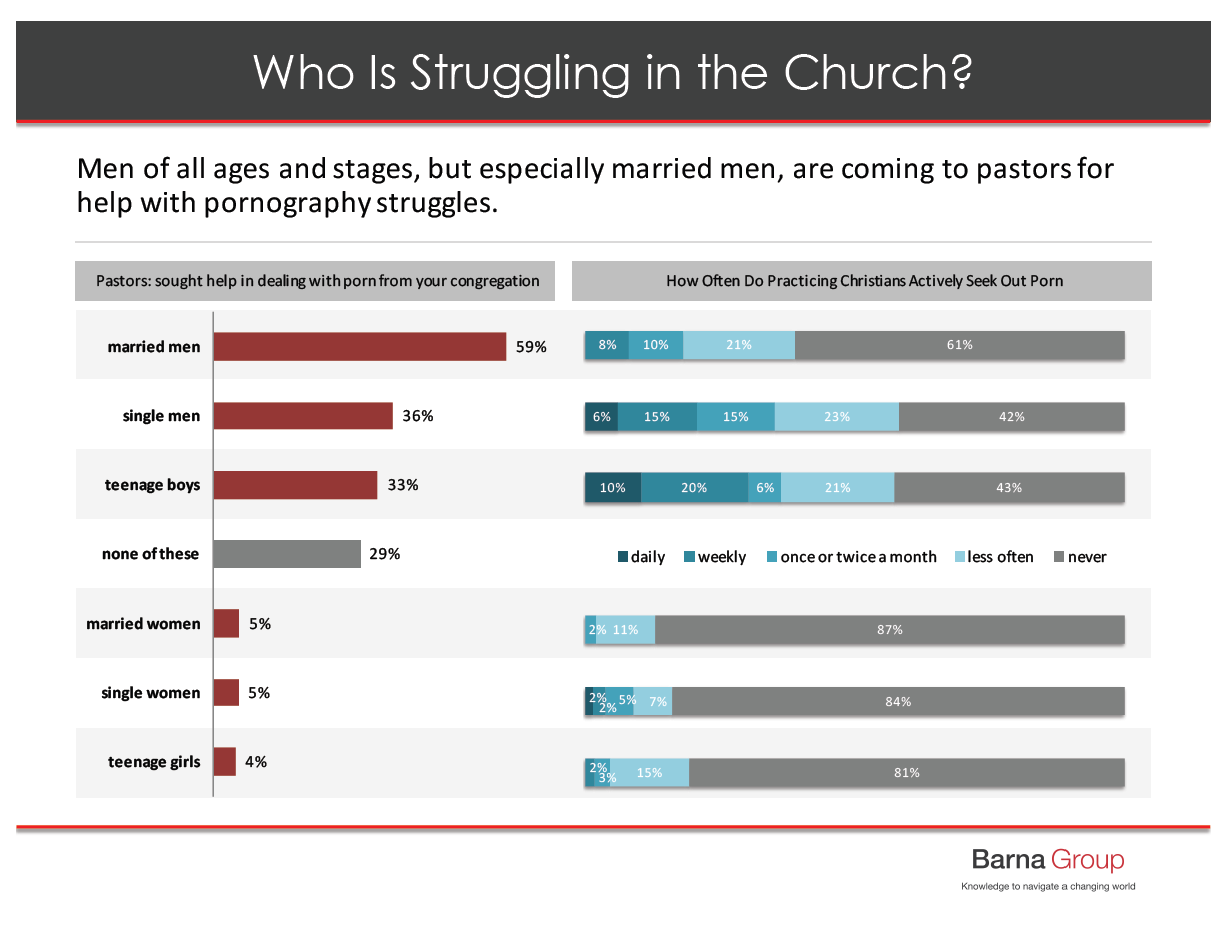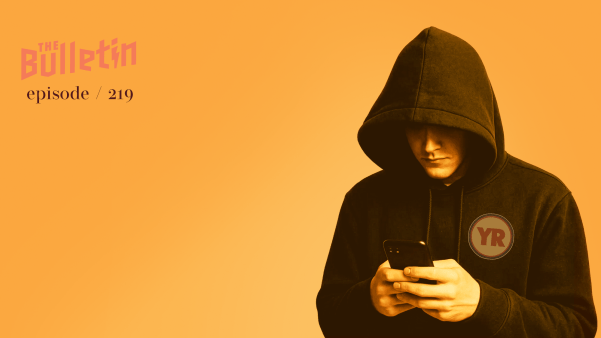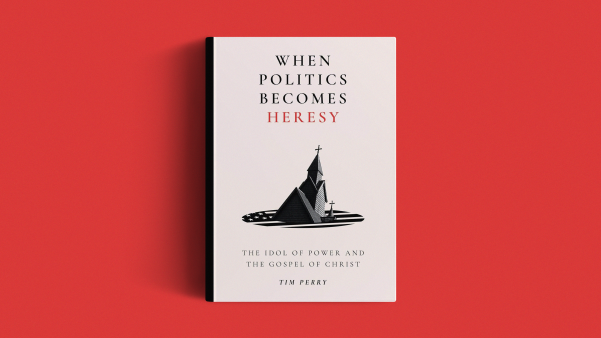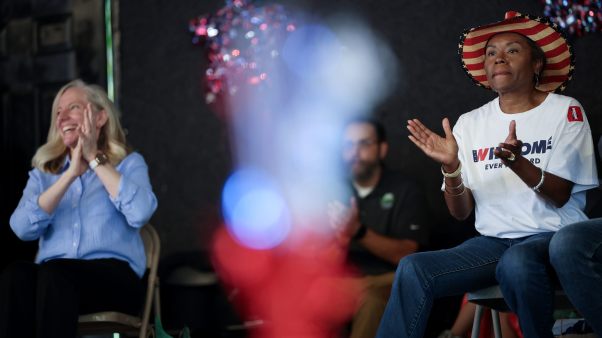Most pastors have struggled with porn.
That’s according to an online study of nearly 3,000 adults, teenagers, and pastors by the Barna Group. The study included 432 pastors and 338 youth pastors, and was commissioned by Josh McDowell Ministry and Cru for an April summit.
The study examined pornography’s effect on pastors, churches, the general population, and young people.
“Most pastors (57%) and youth pastors (64%) admit they have struggled with porn, either currently or in the past,” Barna reported. “Overall, 21 percent of youth pastors and 14 percent of pastors admit they currently struggle with using porn.”

More than 1 in 10 youth pastors (12%) and 1 in 20 pastors (5%) said they’re addicted.
In comparison, 47 percent of men and 12 percent of women in general seek out porn at least once or twice a month. And about 27 percent of Christian men and 6 percent of Christian women actively look for porn during that time.
Half of youth pastors and 37 percent of pastors have visited a website they knew was pornographic, though they didn’t necessarily respond to or engage with it.
Another 46 percent of youth pastors and 37 percent of pastors have flipped through adult TV channels or movies, and 30 percent of youth pastors and 12 percent of pastors have searched for porn on social media.
About a quarter of youth pastors (27%) and pastors (23%) have obtained printed porn, like a magazine.
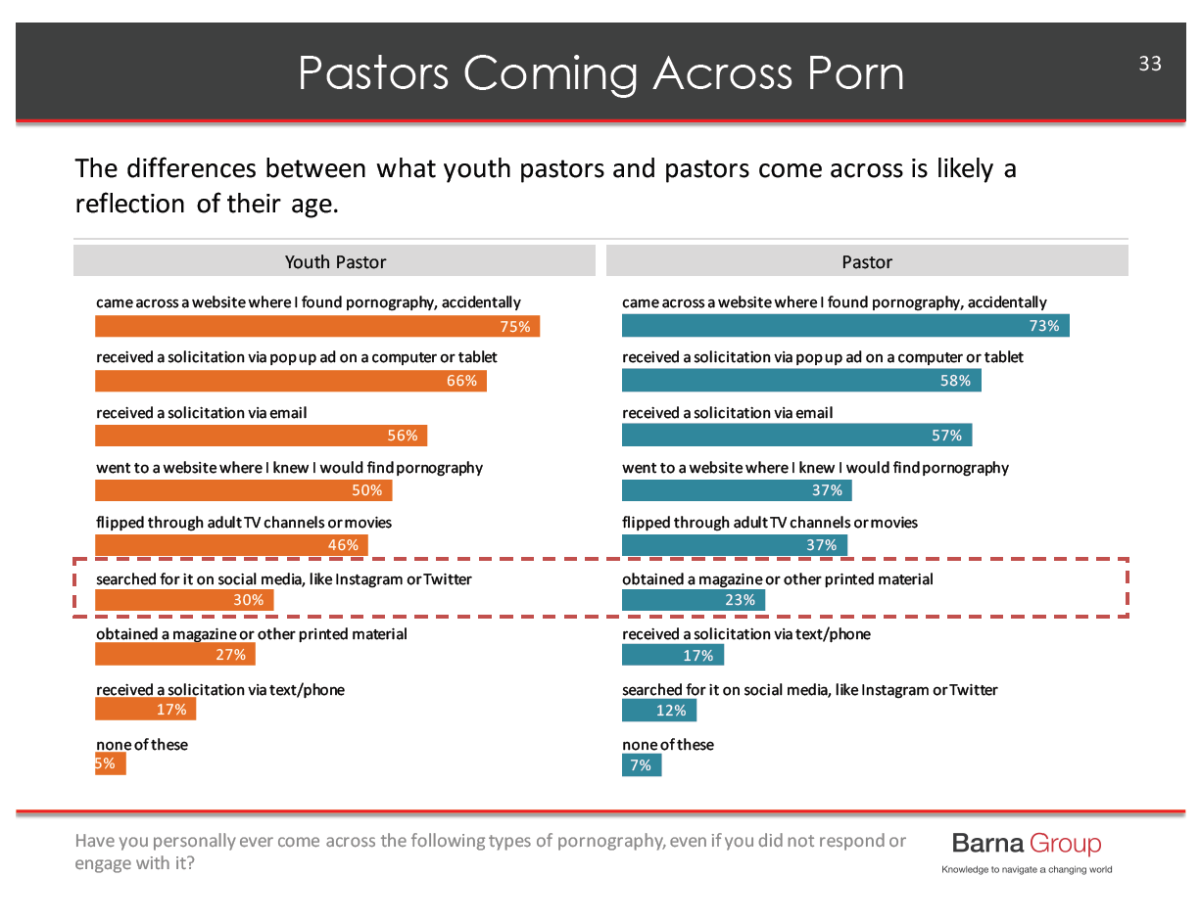
A solid majority of pastors currently using porn said that it negatively impacts their ministry (75% of youth pastors, and 64% of pastors), though twice as many youth pastors (44%) as pastors (18%) said that was “very true.”
The vast majority of pastors (87%) said they felt shame about their habits, and more than half (55%) live in constant fear that others will discover their pornography use.
With good reason—4 in 10 adult Christians said pastors using porn should be fired or asked to resign, while 3 in 10 said that they should be asked to take a leave of absence until they stop using it.
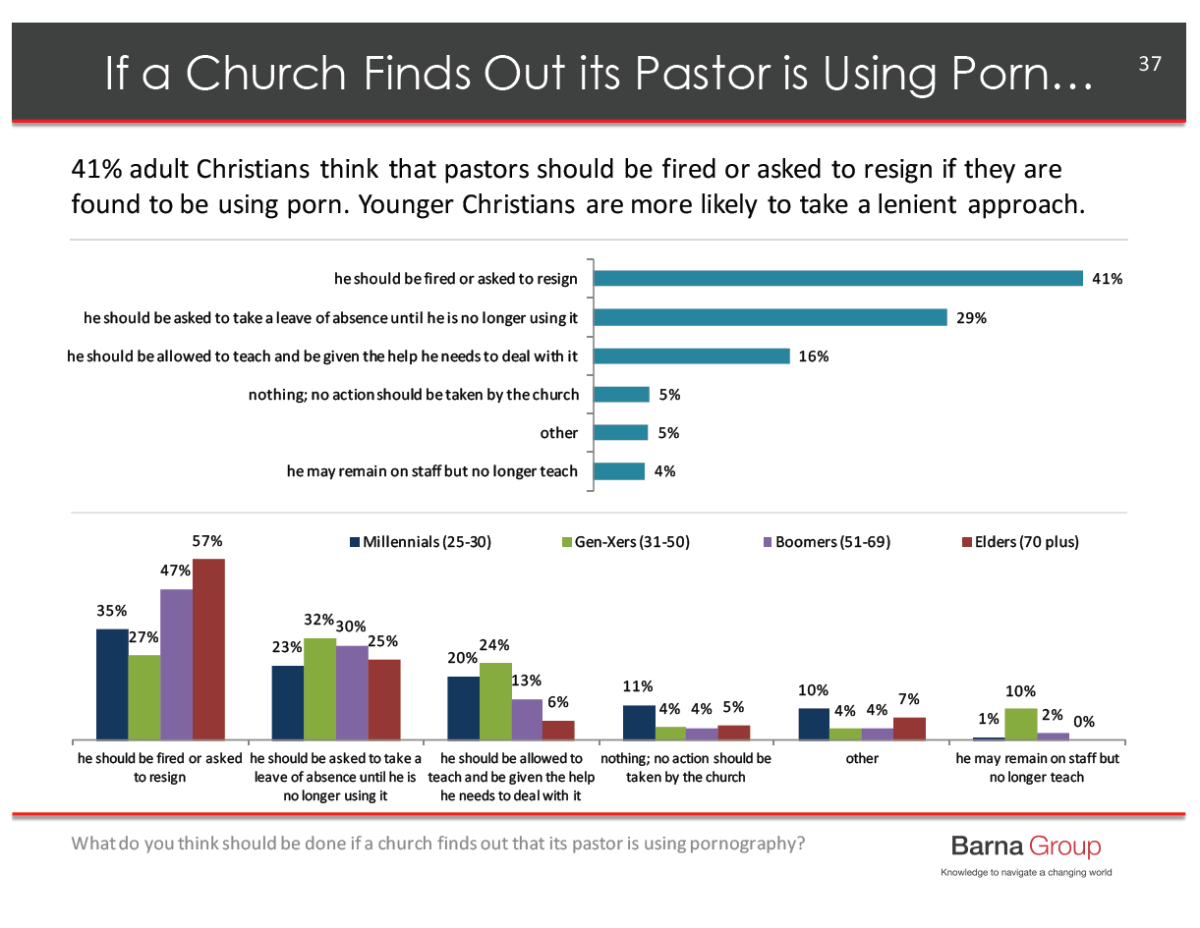
Fellow pastors are much more lenient. Only 8 percent said that pastors using porn should leave their positions. More than 8 in 10 pastors recommended that pastors struggling with porn find a professional counselor, while 6 in 10 said pastors should hold themselves accountable within a group of mature Christians. About 45 percent said they should seek counseling with a fellow pastor.
Almost 6 in 10 recommended that pastors tell their spouses (58%), and even fewer (21%) said to tell the church elders or board. Almost none (1%) said to tell the congregation.
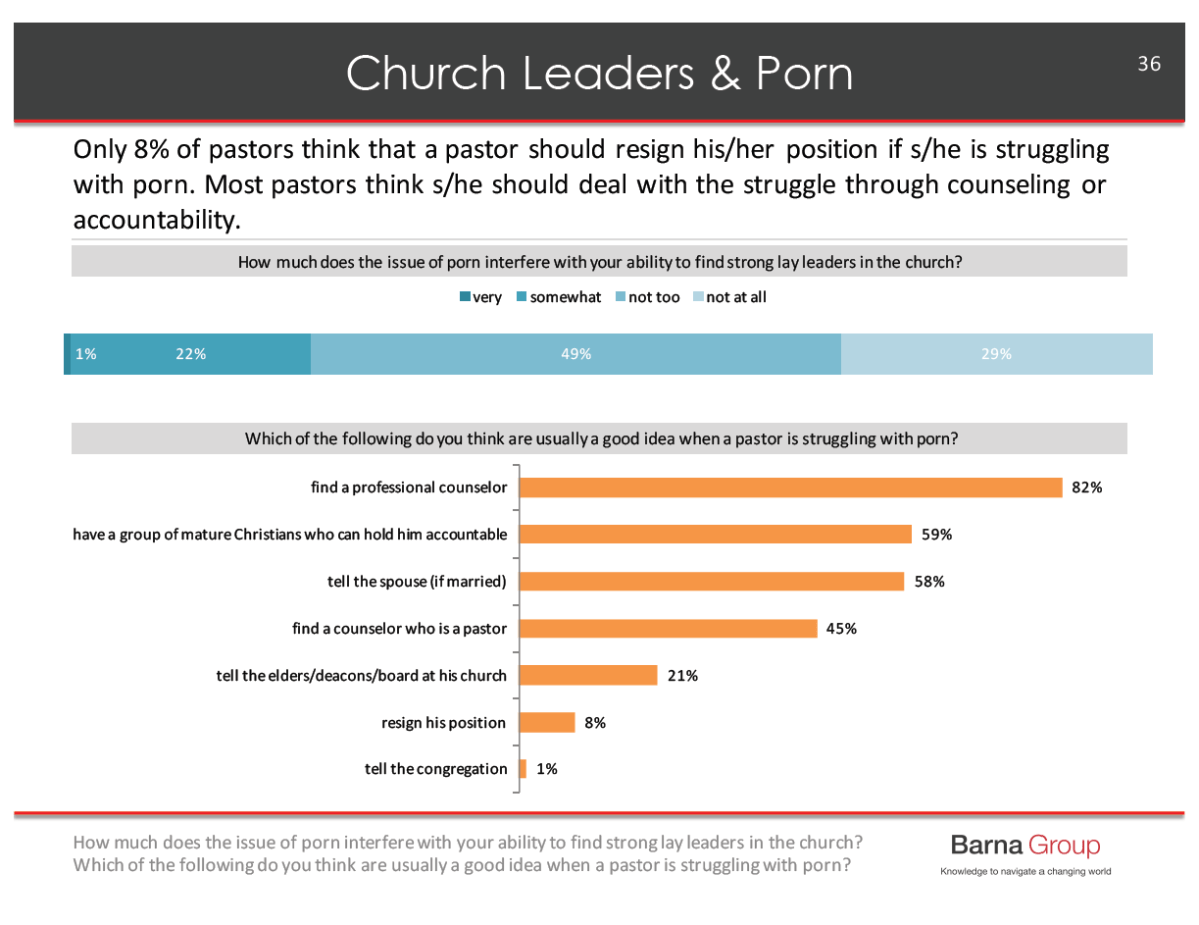
More than 9 in 10 pastors (93% of pastors, 94% of youth pastors) said pornography is becoming a bigger problem, specifically for the church, and 75 percent of the laity agree. However, only 7 percent of pastors said their church had a program designed to help those struggling with pornography.
Seven in 10 youth pastors said that at least one student has asked them for help related to pornography usage in the past year.
Most of those asking for help are boys in high school. Of the pastors who were approached, 92 percent said they’ve heard from at least one boy in high school, 57 percent from a boy in middle school, 23 percent from a girl in high school (23%), and 1 in 10 from a girl in middle school (10%).
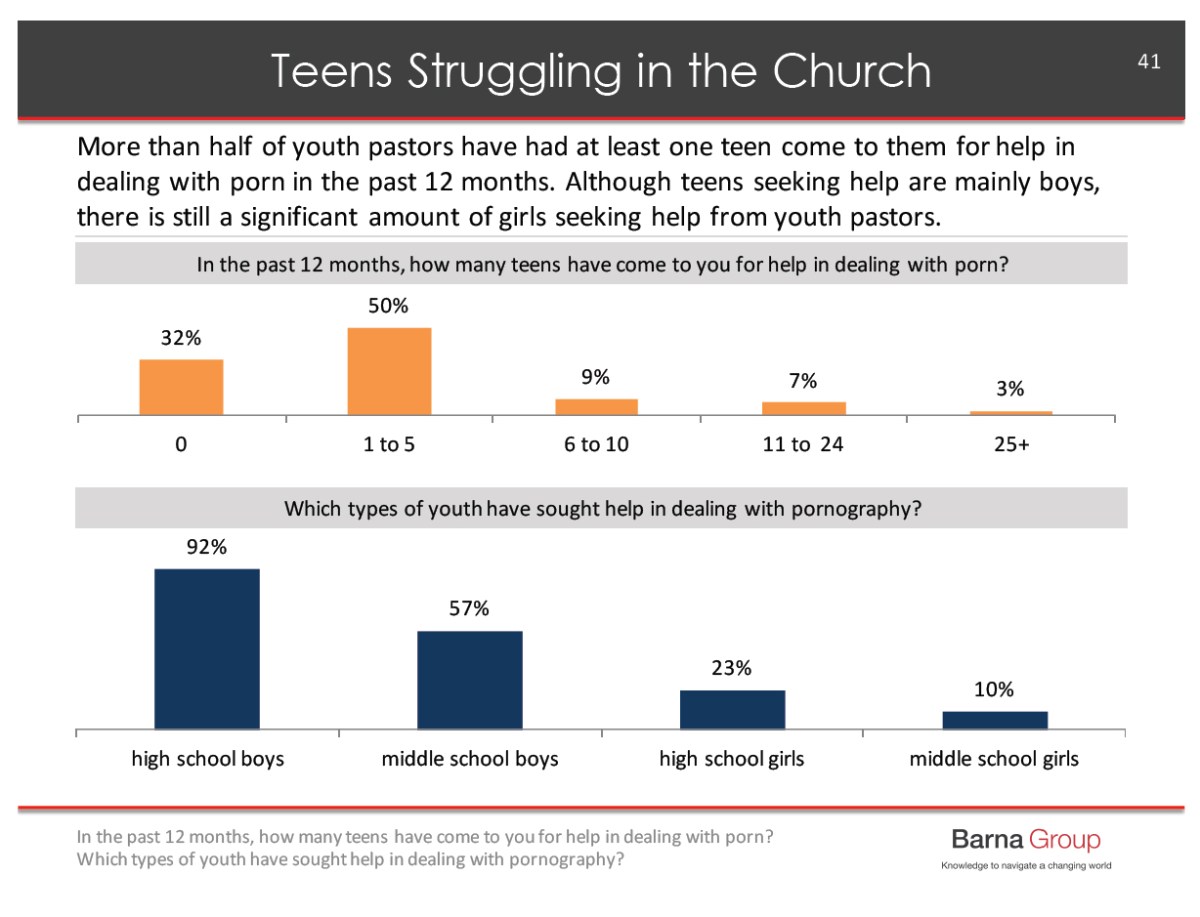
Adults in the church are asking for help, also. Married men seek the most help; they're also the category of men who uses porn the least.
Married Christian men actively search for porn less than single men or teenage boys: 18 percent said they look for porn more than once or twice a month; 61 percent said they never looked at all.
They’re also more likely to ask for help. Of pastors who have been approached for help with porn usage, nearly 6 in 10 have heard from married men (59%), while one-third have heard from unmarried men (36%) and teenage boys (33%). Far fewer have been approached by married women (5%), unmarried women (5%), or teenage girls (4%).
Married women, too, are less likely to look for porn. Two percent of married Christian women look once or twice a month, compared to 9 percent of single women.
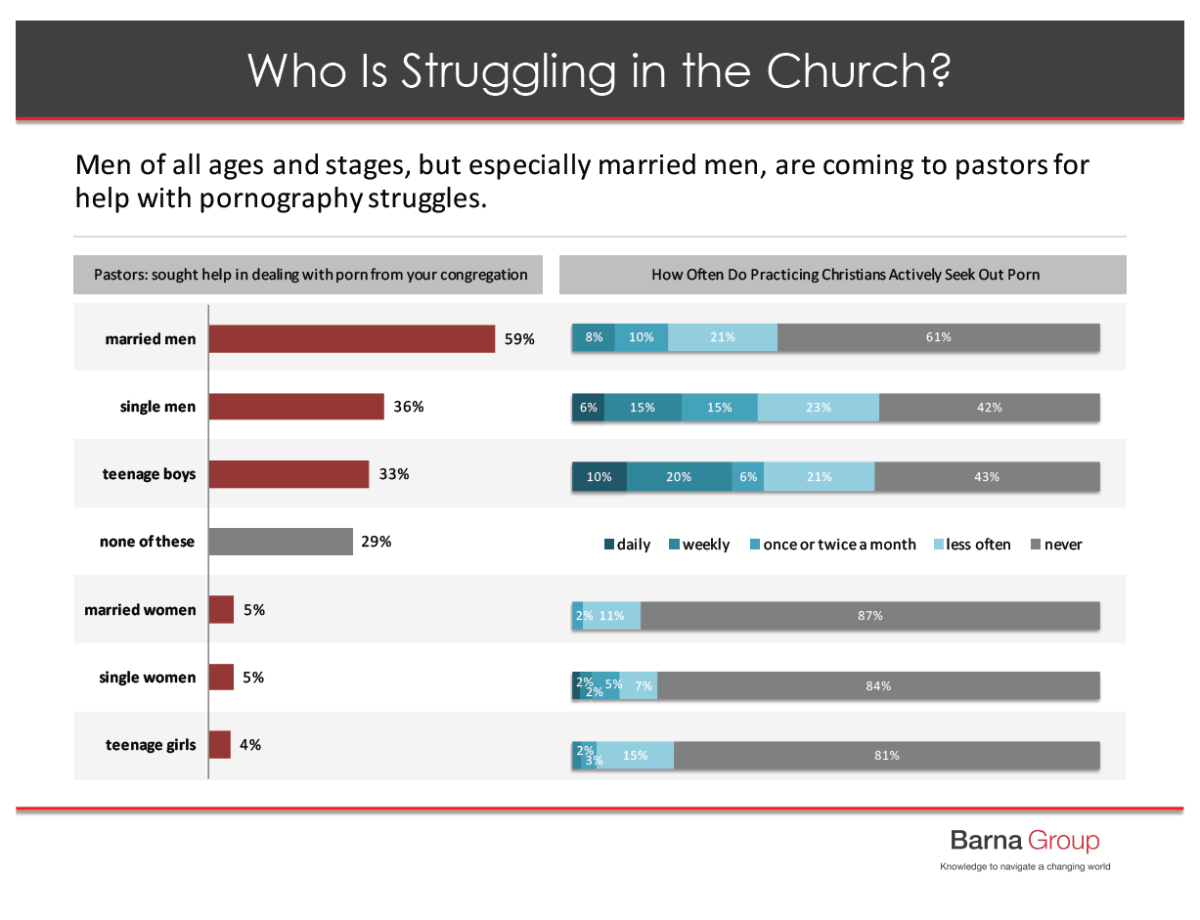
Defining pornography isn’t as tricky as you might think, Barna reported. “Turns out, it’s more a question of function than form. If it’s used for sexual arousal, it’s porn. Simple as that.”
Among teens, steady porn usage starts young.
About 1 in 4 young adults ages 25 to 30 (27%) said they first viewed pornography before hitting puberty. In contrast, only about half as many (13%) of those ages 31 to 50 started viewing pornography before puberty.
Half of teens said they come across porn at least once a month, regardless of whether they seek it out. This number increases to 70 percent for young adults.
About a quarter of teenagers (26%) ages 13 to 17 view porn at least once a week. The number jumps to 38 percent of adults who are ages 18 to 24, and drops again to 25 percent of those ages 25 to 30.
While males still dominate pornography use, more females are reaching for it.
One-third of teenage girls and young women (33%) said they searched for porn at least once a month, while 12 percent of women over 25 reported the same.
Some porn is personal. Two-thirds of those under 24 reported receiving a sexually explicit image from someone they knew (66%), while 44 percent said they had sent one.
And the social stigma of viewing pornography is fading.
When ranking a list of morally objectionable items, teens and young adults said not recycling was more unacceptable than viewing pornographic images. Practicing Christians are twice as likely to feel guilty as others, Barna said.
Methodology:
Barna conducted five online surveys in July and August, 2015 for The Porn Phenomenon report among a total of 3,771 participants.
In a survey among teens and young adults, 813 participants between the ages of 13 and 24 were recruited and surveyed through a national consumer panel. The panel is nationally representative by age, gender, region and socioeconomic grade. The sample error on this survey is plus or minus 3.4 percentage points at the 95-percent confidence level.
In a general population survey, 1,188 adults 25 years and older were recruited and surveyed separately through a national consumer panel. The panel is nationally representative by age, gender, region, and socioeconomic grade. The sample error on this survey is plus or minus 2.8 percentage points at the 95-percent confidence level.
In a survey of clergy, 338 Christian youth pastors and 432 Christian senior pastors were recruited and surveyed through publically available lists and email invitations. The data was weighted to be nationally representative of churches by denomination, church size and region. The sample error on the youth pastor survey is plus or minus 5.2 percentage points at the 95-percent confidence level. The sample error on the senior pastor survey is plus or minus 4.7 percentage points at the 95-percent confidence level.
In a separate survey on views toward sex and women, a total of 1,000 interviews were conducted among adults 18 years and older. The panel is nationally representative by age, gender, region, and socioeconomic grade. Minimal statistical weighting was used to calibrate the sample to known population percentages in relation to demographic variables. The sample error in this survey is plus or minus 3.0 percentage points at the 95-percent confidence level.



